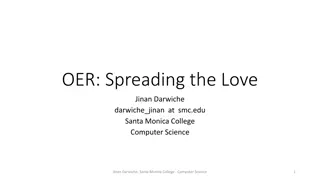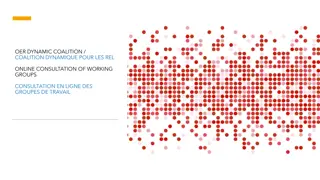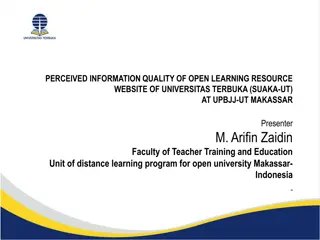
Emerging Trends in Information Systems: Revolutionizing Organizations
Information Systems (IS) play a crucial role in organizations, with emerging trends like AI, IoT, big data, cloud computing, and cybersecurity transforming operations. AI and ML automate tasks, IoT collects real-time data, big data provides insights, cloud computing offers scalability, and cybersecurity protects systems.
Uploaded on | 0 Views
Download Presentation

Please find below an Image/Link to download the presentation.
The content on the website is provided AS IS for your information and personal use only. It may not be sold, licensed, or shared on other websites without obtaining consent from the author. If you encounter any issues during the download, it is possible that the publisher has removed the file from their server.
You are allowed to download the files provided on this website for personal or commercial use, subject to the condition that they are used lawfully. All files are the property of their respective owners.
The content on the website is provided AS IS for your information and personal use only. It may not be sold, licensed, or shared on other websites without obtaining consent from the author.
E N D
Presentation Transcript
EMERGING TRENDS IN IS Username
INTRODUCTION TO EMERGING TRENDS IN IS Information Systems (IS) play a crucial role in organizations and society. As technology continues to advance, new trends emerge in the field of IS. These emerging trends have the potential to revolutionize the way organizations operate and interact with their stakeholders
ARTIFICIAL INTELLIGENCE (AI) AND MACHINE LEARNING (ML) AI refers to the development of computer systems that can perform tasks that would normally require human intelligence. ML, on the other hand, focuses on the development of algorithms that allow computers to learn and improve from experience without being explicitly programmed. These technologies have the potential to automate and optimize various business processes and decision-making
INTERNET OF THINGS (IOT) IoT refers to the network of physical devices, vehicles, appliances, and other objects embedded with sensors, software, and connectivity, enabling them to collect and exchange data. This trend has the potential to revolutionize various industries, including healthcare, transportation, and manufacturing. With IoT, organizations can collect real-time data, improve operational efficiency, and provide personalized services
BIG DATA AND ANALYTICS The proliferation of digital data has led to the emergence of big data. Big data refers to large and complex datasets that cannot be easily managed or analyzed using traditional data processing techniques. Analytics, on the other hand, involves the use of statistical and quantitative methods to uncover patterns, insights, and trends from data. Big data and analytics enable organizations to make data-driven decisions, identify opportunities, and gain a competitive advantage
CLOUD COMPUTING Cloud computing involves the delivery of computing services, including storage, servers, databases, software, and analytics, over the internet. This trend allows organizations to access and use resources on- demand, without the need for upfront infrastructure investment. Cloud computing offers scalability, flexibility, and cost savings, making it an attractive option for organizations of all sizes
CYBERSECURITY With the increasing reliance on technology and digital systems, cybersecurity has become a critical concern for organizations. Cybersecurity involves the protection of computer systems, networks, and data from unauthorized access, theft, and damage. Emerging trends in cybersecurity include advanced threat detection, artificial intelligence-based security systems, and blockchain technology for secure transactions
ETHICAL AND SOCIAL IMPLICATIONS As IS technologies continue to evolve, ethical and social implications arise. Issues such as privacy, data security, job displacement, and algorithmic bias need to be addressed. Organizations and policymakers must consider the potential impact of emerging IS trends on individuals, society, and the environment and ensure responsible and ethical use of these technologies
CONCLUSION The field of IS is constantly evolving, driven by emerging trends and advancements in technology. Understanding and embracing these trends is crucial for organizations to stay competitive and leverage the potential benefits of new technologies. By staying informed and adapting to these emerging trends, organizations can drive innovation, improve efficiency, and create value for their stakeholders






















